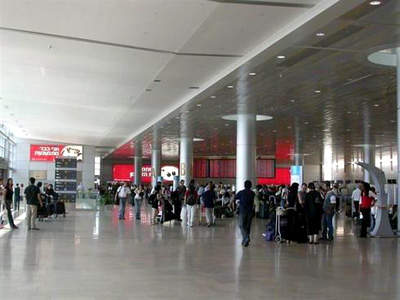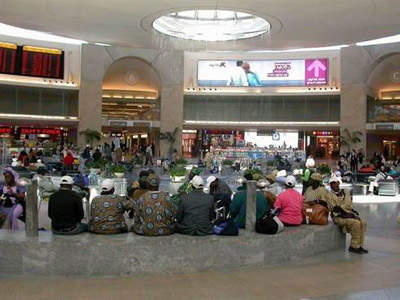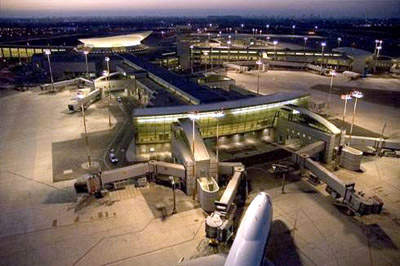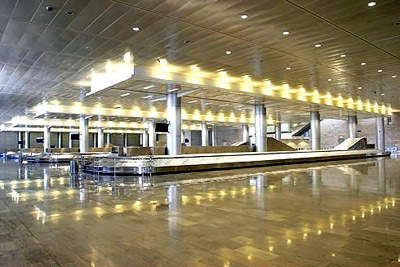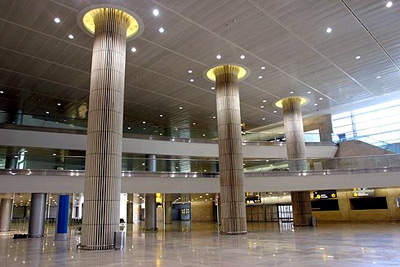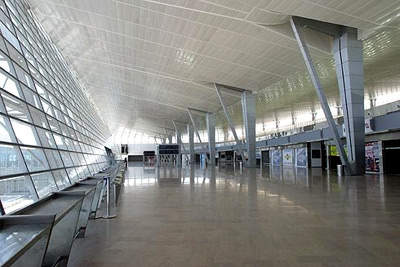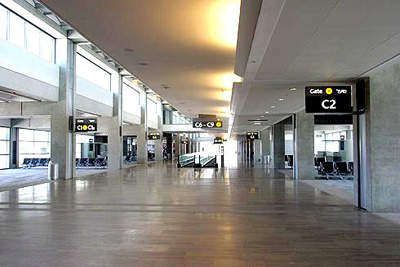Ben Gurion International Airport, or Lydda Airport as it is sometimes referred to, is the largest international airport in Israel. The airport is located near the town of Lod around 15km (nine miles) south-east of the capital Tel Aviv.
Prior to 1973 the airport was known as Lod Airport when the name changed to honour David Ben Gurion who was Israel’s first prime minister. The airport is operated by the Israel Airports Authority (IAA), a government-owned corporation that manages all public airports and border crossings in the State of Israel.
The airport initially had three runways (03/21 5,840ft, 1,780m; 08/26, 11,998ft, 3,657m (refurbished (ILS24m) in February 2006 to take A380) and 12/30, which is 10,210ft, 3,112m) and is used by commercial, private, and military aircraft. A fourth runway named Track 21 was inaugurated in May 2014 following a four-year runway upgrade project, which included paving and new lighting installation along the runways. The estimated investment on the runway upgradation project was NIS 1bn ($287m).
There are also four terminal buildings: terminal three is used for international flights, terminal one is used for domestic flights; terminal four is not open to the public and is used for special events.
The airport is located on Highway 1, the main road between Jerusalem and Tel Aviv, and also has excellent rail links. In 2006 the airport received 8,816,597 international passengers (increase of 3.6% over 2005) and 404,961 domestic passengers. These figures are likely to climb sharply because Sde Dov Airport in Tel Aviv (a prime 125-acre site) is to be closed in 2007 and all of its commercial flights are being rerouted to Ben Gurion. Luxury apartments are to be built on the old airport site.
SECURITY
Ben Gurion Airport is one of the world’s most secure airports, with a security force that includes both police officers and Israel Defence Force (IDF) soldiers. Security guards at the airport operate both in uniform and undercover to maintain a high level of readiness and detect any possible threats from terrorist attack.
The airport has historically been the target of several terrorist attacks, but no attempt to hijack a departing plane has ever succeeded. Terrorist attacks have come from planes being hijacked in other countries and them being forced to fly to Ben Gurion. The airport security and the IDF are well experienced in all aspects of security and Ben Gurion has state-of-the-art security systems in place.
AIRPORT OPERATION
The airport first opened in 1936 and was strategically important during the Second World War. In 1948 the airport passed into the control of the newly founded State of Israel and the airport started to expand.
By the 1990s the facilities were too small and a new terminal was planned. The decision to build terminal three (T3) was taken in January 1994, to be completed by 2000 in time for the millennium celebrations. After delays, T3 was finally opened in November 2004
After the new international terminal three opened, terminal one was closed to all except for government flights such as special immigration flights from North America and Africa. Terminal one reopened in February 2007 as the domestic terminal following extensive renovations, which took about two years.
TERMINAL ONE
Terminal one underwent a comprehensive renovation and modification and is now Israel’s main domestic air terminal serving over 400,000 passengers a year. The previous domestic terminal, terminal two, was to be demolished and used by the cargo handler Swissport, but in July 2007 was given a reprieve and is now being used by low-cost airlines.
The total cost of the renovation was approximately ILS14.5m. In refurbishing the terminal existing facilities and infrastructure were retained in the design as much as possible to reduce costs.
The new design by Israeli architect Yossi Assa places great emphasis on accessibility and convenience of the facilities, both for disabled passengers and for the general public. The terminal is on one ground-floor level so that the entire departure or arrival process can be traversed on one level quickly and comfortably and with maximum convenience for the disabled.
Israel Airports Authority CEO Gabi Ofir said: “Launching the new and renovated terminal one for domestic flights was part of the Authority’s massive investment in developing and improving passenger services. I believe that the new terminal will meet the high standards set by terminal three, and contribute significantly to Ben Gurion Airport’s positioning as one of the world’s best and most modern airports.
“The Israel Airports Authority has set itself the goal of constantly improving the service we provide to passengers, while also maintaining high levels of safety and security throughout all the Authority’s facilities.”
Terminal one can handle four outgoing flights at the same time and covers an area of 8,000m². The terminal is divided into three main areas: security check and check-in hall (departures hall), the arrivals hall and the greeters’ hall. The security and check-in hall (1,250m²) contains the new Almog VIP lounge, a cafeteria, benches, restrooms with baby facilities, payphones, and vending machines for food and drink.
The departures hall, where passengers wait to board their flights, has four gates leading to the aircraft. The arrivals hall is 1,186m² and includes a jetway, a double luggage conveyor belt, a monitor displaying information on incoming flights, drinking water fountains, vending machines for hot and cold drinks, payphones, and free self-service trolleys.
The greeters’ hall, which is for waiting and greeting arriving passengers, is located next to gate three. The hall has a cafeteria, drinking fountains, an ATM and a VIP lounge. Terminal one may be kept open for 24 hours a day in the future to handle charter flights from Europe.
VIP WING
On February 2006, the IAA announced their plans to invest ILS4.3m in a new VIP wing for private jet passengers and crews. VIP ground services already exist, but an increase in users is now justifies expanding the facilities.
The new VIP wing, operated by an outside licensee, is located in an upgraded and expanded section of terminal one.
The new wing includes a hall equipped for press conferences, a deluxe lounge, special meeting rooms equipped with state-of-the-art business facilities and a designated lounge for flight crews who spend time at the airport between flights.
TERMINAL THREE
Terminal three is the main international gateway to and from Israel and was designed by Black and Veatch, Skidmore, Owings and Merrill (SOM), and Israeli architects Moshe Safdie, Ram Karmi and others.
The new terminal was designed to serve over ten million passengers a year, although it could accommodate 16 million passengers a year with the addition of two new concourses to the existing three. It is more likely that a new international airport would be built at another site if capacity was to be exceeded.
The original year 2000 deadline for the construction was not met because of the bankruptcy of the main Turkish contractor. Minrav Engineering Ltd became one of the main civil contractors for the airport in conjunction with PERI Israel and PERI Formwork Israel. The project cost an estimated $1bn.
The terminal uses the jetway system and has a layout with multiple levels, and considerable walking distances. Walking is assisted by escalators and travellators. The ground floor departures hall has an area of over 10,000m² (107,639ft²) and is equipped with 110 check-in counters and state-of-the-art Flight Information Display Systems (FIDS).
The terminal’s shopping centre is called the ‘Buy & Bye’ and includes shops, restaurants and a post office. Some of the tenders for stores in the retail area have not been taken up and the future is in question. On the same level are passport control and the security check (five explosive detection systems were provided by L-3 Communications in a $26m contract in 2004).
Take-off and landing can be viewed from a distinctive tilted glass wall in the terminal. Car rental is located in a mezzanine level between the departing and arriving passenger halls. Terminal three has two synagogues and also a Muslim prayer room.
The passenger waiting area is the star-shaped duty-free rotunda with a variety of 24-hour cafes, restaurants and duty-free shops, as well as bank facilities and a VAT refund desk.
Terminal three has three concourses (B, C and D), each with eight Jetways (numbered 2–9). Each concourse has two bus bays (1 and 1A); from here the passengers board the aircraft. The two additional concourses (A and E) are to be built if passenger numbers dictate.

